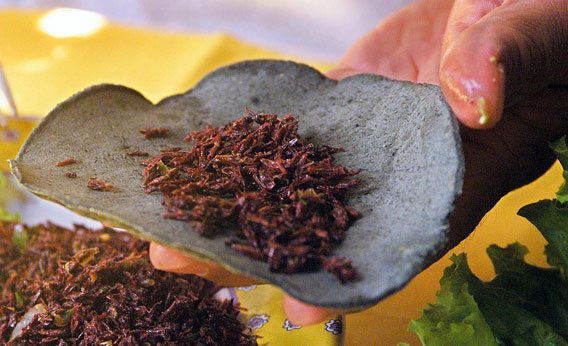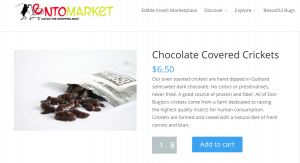Sustainable Food Trends in 2016
What do seaweed, insects and seeds such as beans, chickpeas and lentils all have in common? These are all foods which are predicted to be trending in 2016. With more food producers taking responsibility of the entire product lifecycle through product stewardship (cradle-to-cradle supply chain management) and many consumers shifting towards a plant-based diet (WHO announced that daily consumption of red meats could increase the risk of cancer), unusual foods are entering the spotlight. Take seaweed: not only is it a source of protein, calcium, Omega-3s and iodine, but it is a sustainable food because it does not require agricultural land or fresh water to grow. Even edible insects, such as crickets, are now entering the marketplace to compete with meat and fish as a more healthy and environmentally-friendly source of protein and nutrients.
Convincing consumers in developed countries to purchase edible insects is quite a daunting task, as it requires changing long-held perceptions of disgust and low-status associated with eating insects. As we learned in class, consumers are more likely to choose a sustainable product when it is safe and of high quality. In this case, edible insects sold must be both safe to eat and taste good to be considered an alternative source of protein in the consumer decision-making process. Therefore, it would be beneficial for marketers to change perceptions of disgust by stressing product safety and quality. In terms of low-status perceptions, there have been suggestions to market edible insects as a high-status product by serving them at expensive restaurants by credible chefs (this was successful in the past with Lobster).
A non-profit organization that is attempting to change negative perceptions about edible insects is Little Herds. It takes part in world-wide food fairs and conferences each year by offering cooking demonstrations, edible insect snacks, and its partner experts explain the health and environmental benefits of eating insects. If consumer awareness is increased and they are given free trials, it is more likely that their negative perceptions will shift.
If you are looking to try edible insects for yourself, EntoMarket is an online marketplace that offers a wide variety of high-quality products. For instance, their Cacao Nut Protein Bar is made with cricket flour protein and was “designed by a three-Michelin-starred chef.” Although their products are priced at a slight premium in comparison to other alternatives, their value-added comes in the form of superior taste and high quality.



It interesting to see these trend emerge in the market. People’s perception of food is definitely changing. It seems that in the past customers would choose what to eat based on if it tasted good and if it was readily available. Although I am not suggesting these things don’t matter now, I think that factors such as health and nutrition are more understood and valued today. I am curious to see if this trend can continue so much so that people will be able to literally swallow the idea of ingesting bugs. If they are good for you why not? I think it is possible, as you mentioned in your post, the same was though for lobsters in the past. This past decade we have seen rise to things like kale and quinoa in the North American market. Previously these items where practically unheard of. Perhaps changing the name ‘cricket’ to something more appealing would work like it did for the ‘slimehead’ fish, now better know as the edible and tasty orange roughy. If marketers are able the separate this new product from the old stigma then the “ick” factor might be overcome and people might be eating bugs in the next few years.
It is interesting to know there are companies and associations trying to change people’s perception towards edible insects. Personally, I have tried insects during my trip in China and Cambodia and it actually tastes not bad. Nutrition-wide, I have read many articles suggested that insects are actually rich in protein and some micro-nutrient. Therefore, I could see insects might eventually become one of the dish we would have in our dinner table but I would still believe it will be a long process to change people’s perception. Using myself as an example, I have fish and birds at home, and I sometimes feed them with crickets. As the result, I tend to consider cricket to be pet food, even though I knew crickets are edible.
I think it is extremely interesting to see edible insects as an emerging food trend in the West, when they have been used as protein in many other cultures for centuries! I definitely think that marketing these products as “high status” could attract green-minded individuals (or those with experimental taste palettes!) to purchasing them. I also think, however, that it would take ages to actually exist as an alternate protein source to current protein because of the possibly large number of insects you would need to eat, as well as the current view that insects would be something to try in a small quantity as a delicacy rather than a major meal constituent. I wonder how much protein is actually in certain insects? This could impact how much of a viable alternative they could be!